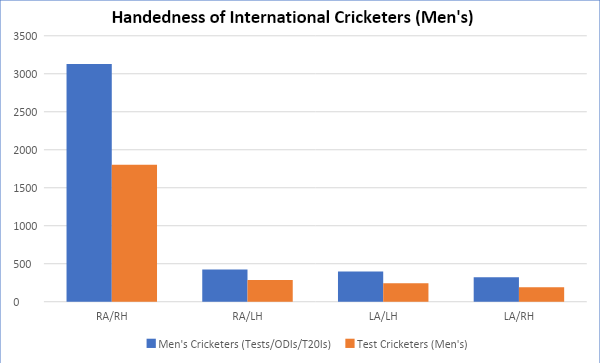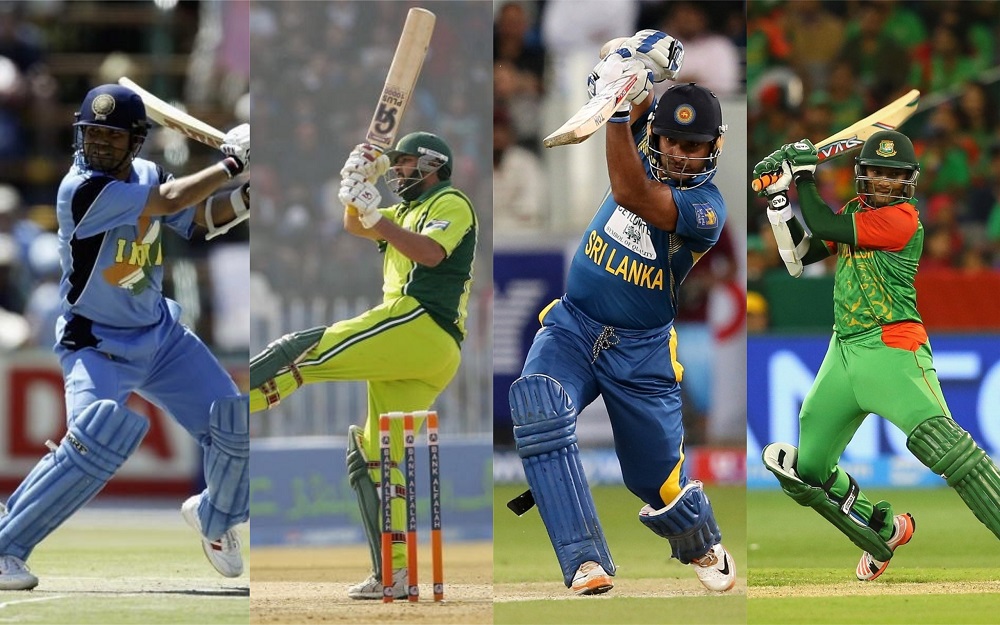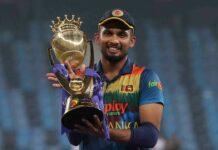In 2019, the world witnessed two epic innings from Kusal Perera and Ben Stokes that shook the cricketing fraternity. Those innings were rated as in the same bracket or sometimes even higher than Brian Lara’s match-winning 153* against Australia in Barbados. These three gifted left-handed batsmen managed to produce three of the greatest innings the world has ever seen. Interestingly, all three of them share another similarity in being somewhat ambidextrous as Lara is a right-handed golfer, Stokes is a right-arm seamer and Perera was a right-handed batsman who switched his stance.
Out of all the classifications of a player in cricket, one of the most fascinating subjects is the ‘handedness’ of a cricketer. Approximately, 10% of the world population is left hand dominant which means those people eat, write or throw with their left hand. But when it comes to cricket, the term handedness is not that simply defined. The bowlers who bowl with their right/left hand are called right/left arm bowlers and the batsmen who bat with a right/left side stance are called right/left-handed batsmen. As you can guess, most of the cricketers are completely right-hand dominant players. Which means those players can be classified as ‘right-handed batsman/right arm bowler’.
A pandemic, cricket and its people
Some cricketers who bowl with their right hand, tend to bat with a left side stance. (RA/LH) These players are still right hand dominant or they eat, write or throw with the right hand but has cross dominance when batting. On the other hand, left hand dominant players are less in number in the cricket field, out of them, left arm bowlers who bat right-handed are the rarest.

According to ESPN Cricinfo Statguru, 73.21% of the population of Cricketers who have played any of Test, ODI or T20I formats are fallen into ‘Right Arm bowler/Right-Handed batsman’ category. After them, [2]RA/LH, [3]LA/LH and [4]LA/RH types of cricketers sit with population percentages of 9.89%, 9.31% and 7.58% respectively.
Cricketers who are:
RA/RH (R/A bowler & R/H batsman) – Ricky Ponting, Jacques Kallis, Virat Kohli, AB de Villiers, Younis khan
RA/LH – Brian Lara, Sourav Ganguly, Alastair Cook, Matthew Hayden, Ben Stokes
LA/LH – Alan Border, Yuvraj Singh, Shakib al Hasan, Daniel Vittori, Dean Elgar
LA/RH – Inzamam-ul-Haq, Michael Clarke, Grant Flower, Aaron Finch, Ravi Shastri
SLC to bid for two ICC events in 2023-2031 cycle
When it comes to Sri Lanka, the rarest kind of cricketers are from LA/LH category and the RA/LH players represent a higher percentage of the country’s top-level cricketers than to the world’s. (RA/LH – 9.89% in World but 22.63% in Sri Lanka).
Sri Lanka Cricketers who are:
RA/RH – Mahela Jayawardene, TM Dilshan, Aravinda de Silva, Marvan Atapattu, Angelo Mathews
RA/LH – Kumar Sangakkara, Arjuna Ranatunga, Dimuth Karunaratne, Thisara Perera, Russel Arnold
LA/LH – Sanath Jayasuriya, Chaminda Vaas, Rangana Herath, Lasith Embuldeniya, Nuwan Zoysa
LA/RH – Isuru Udana, Chanaka Welagedara, Lakshan Sandakan, Vishwa Fernando, Don Anurasiri
Any advantage from being a certain type?
Naturally, RA/LH and LA/RH players find it easier to hold the bat with their naturally stronger hand as the top hand which gives them more control and is their dominant hand (Top hand dominant).
A 2017 research on Baseball players (research by David Mann, Florian Loffing and Peter Allen) shows that baseball players who bat left but throw right-handed have a surprising advantage, increasing the likelihood of becoming professional players, but also improves a professional player’s likelihood of being one of the top hitters in the Major League. It also concludes these players enjoy a biomechanical advantage, with the dominant (throwing) hand being placed further from the hitting end of the bat, providing a longer lever with which to hit the ball.
This can be easily translated to Cricket, as the way the players hold the bat is the same as Baseball. Simply put, RA/LH (or LA/RH) players can generate more power from their bat compared to RA/RH (or LA/LH) players given that two players apply the same force into their bats.
When you go through the highest run scorers in Test history, RA/LH players seem to have punch above their weight in terms of population. Even though the population of RA/LH players in Test history is close to 11%, these players represent 40% of top 10 run scorers, 30% of top 50 run scorers and 24% of top 100 run scorers in Test cricket.

Special Cases
You’d think when a cricketer bowls from a certain arm, that should be his dominant arm. In other words, bowling arm should be the arm he/she uses to write, eat or throw. That’s the common scenario with most of the cricketers until you come across Sachin Tendulkar and Kane Williamson. Both players bat right-handed, bowls from right arm but they write from their left hand.
The handedness of a player is what comes natural and comfortable to him while batting, bowling and throwing but it’s a skill that you can switch/learn later in your career.
Australian opener David Warner is an example for an ambidextrous batsman. He has batted right-handed in high school, and has practiced right-handed as well, when he is a naturally left-handed batsman. Another interesting example is Kusal Perera who switched his batting side to imitate his idol Sanath Jayasuriya. The ‘Mr. Cricket’ Micheal Hussey has also done the same in his early days, trying to replicate Alan Border’s batting stance.
Sri Lanka’s young all-rounder Kamindu Mendis is what you call an ambidextrous bowler. The 21-year-old can bowl right arm off-break and left arm orthodox deliveries.
Some players are forced to switch their throwing arm due to injuries. The late Phil Hughes (Left hand dominant) and George Bailey (Right hand dominant) had to teach themselves to throw the ball from their respective weaker arm because of shoulder injuries.
Despite all the hype around the ‘handedness’ and cricketers trying and practicing new skills to come out on top of the competition, whichever skill that’s perfected is ultimately likely to bring the best results. From the right-handed ‘God’ Sachin Tendulkar to the left-handed ‘Prince’ Brian Lara and the right-handed ‘Giant’ Glenn McGrath to the left-handed ‘Sultan’ Wasim Akram, all the variations of styles have made cricket what it is today.















